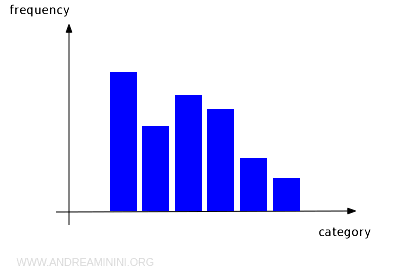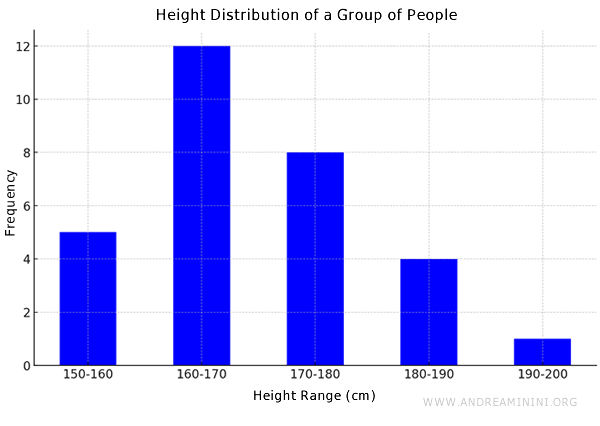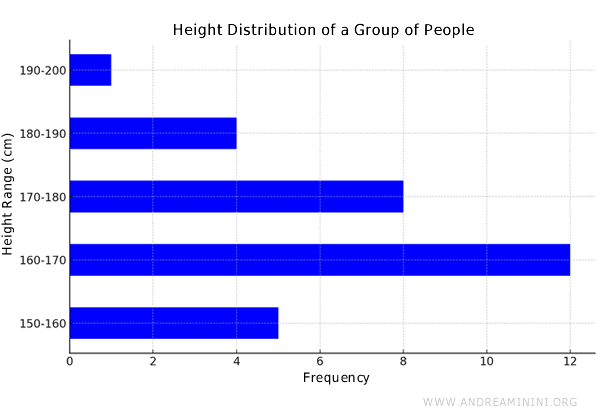Bar Charts with Equal Base Widths
An equal-width bar chart is a specific type of bar chart where all bars share the same base width, and the height of each bar represents the absolute or relative frequency of each data category.

The horizontal axis is divided into segments of equal length, with each segment representing a different category. A bar is constructed in each segment, and its height corresponds to the frequency of that category.
This type of chart is commonly used in statistics to illustrate the distribution of a quantitative variable.
An equal-width bar chart has two main characteristics:
- Consistent Base Width
In an equal-width bar chart, the base of each bar is always the same width. This distinguishes it from other bar charts where the width of the bars can vary. - Heights Reflect Frequencies
The height of each bar is proportional to the frequency of the category it represents. For example, if one category occurs twice as often as another, its bar will be twice as tall.
Maintaining equal base widths makes it easier to visually compare frequencies across different categories, as the tallest bar always represents the most frequent category.
What’s the difference between an equal-width bar chart and a standard bar chart? An equal-width bar chart is a type of bar chart where all the bars have the same base width, and their heights are proportional to the frequency of the category. In standard bar charts, however, it’s not the height but the area of the bar that’s proportional to the frequency. This means that in a standard bar chart with varying bar widths, the tallest bar doesn’t necessarily represent the most frequent category.
A Practical Example
Let’s say I need to represent the height distribution of a group of people.
Assume the heights are divided into equal-width classes (e.g., 150-160 cm, 160-170 cm, etc.).
| Height Range (cm) | Frequency |
|---|---|
| 150-160 | 5 |
| 160-170 | 12 |
| 170-180 | 8 |
| 180-190 | 4 |
| 190-200 | 1 |
An equal-width bar chart allows you to quickly identify the most common categories by simply comparing the height of the bars.

The categories (150-160 cm, 160-170 cm, etc.) are shown on the horizontal axis, while the absolute frequencies are displayed on the vertical axis.
It’s immediately apparent that the 160-170 cm category is the most common, as it has the tallest bar.
Note: In some cases, the bars are arranged horizontally. This is still considered an equal-width bar chart. When the bars are horizontal, the categories are listed on the vertical axis, and the frequencies are displayed on the horizontal axis.

In this case, the longest bar indicates the category with the highest frequency.
And so on.
